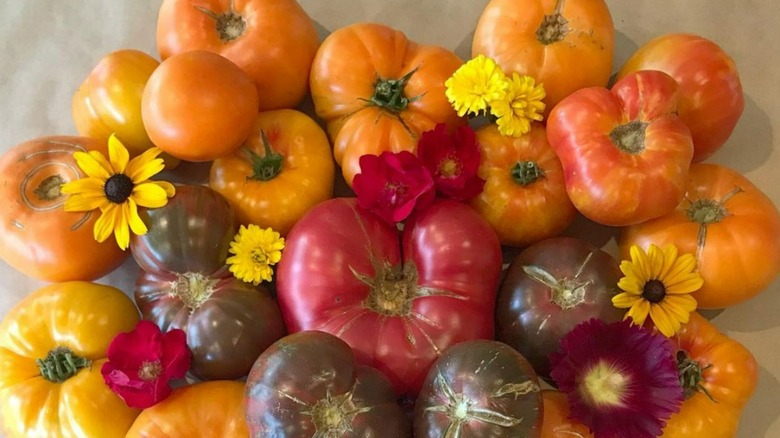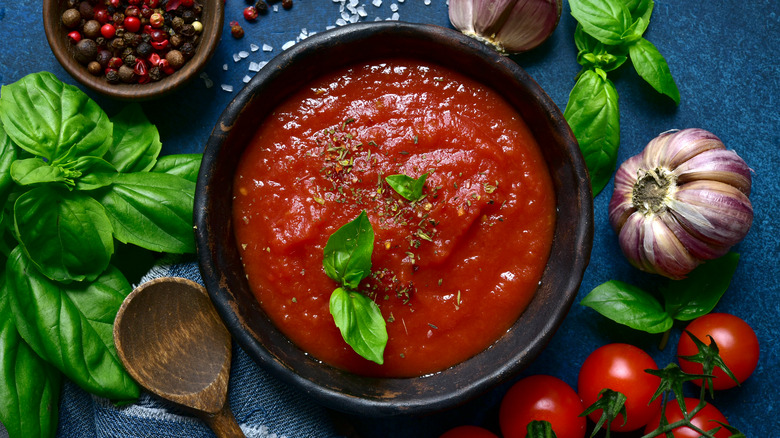Here's Why Your Tomato Sauce Came Out Orange
To recognize that a truly gorgeous homemade tomato sauce is more than just a sauce made from tomatoes requires only a passing glance at the tomatoes from which it gets its start. Whether you're using canned tomatoes or fresh, the color of the tomatoes, themselves, will rarely match the lusciously deep dark red that serves for many as the homemade tomato sauce gold standard. One reason is that what you decide to add to your tomatoes as you construct your sauce plays a role in your finished sauce's color.
For example, adding a small amount of tomato paste can help deepen the red color, as well as thicken the sauce and enhance its tomato-y flavor, per Pomi. In addition, although both white wine and red can enhance the flavor of tomato sauce, red wine, and especially some of the darker, fuller-bodied varieties, will help deepen the color of your finished product. The blogger behind Pantry & Larder points out that steeping your fresh herbs in red wine before adding them to the sauce can deepen the color further. The blog also suggests adding red peppers and using canned tomatoes rather than fresh ones to help boost the red factor.
But what if you've tried all these tricks, and your tomato sauce is still turning out orange? In that case, it may be a matter of the method you're using to blend your ingredients.
For deep red tomato sauce, avoid emulsification
Let's say you've used only the ripest tomatoes in your tomato sauce, perhaps even pre-roasting your tomatoes, not to mention you've steeped your fresh green herbs and added dark red wine, tomato paste, and/or red peppers. If your tomato sauce is, nevertheless, still turning out orange, we're going to guess that perhaps you have done something to emulsify it, which is known to cause tomato sauce to appear orange.
Emulsification means forcefully combining two liquids that do not naturally mix – one of which is usually an oil, per MasterClass. Agitation is the gold standard for emulsification, and in home kitchens, that usually involves a whisk, blender, or food processor. Since many tomato sauce recipes call for oil, you may find yourself taking an immersion blender to it in order to get the ingredients to blend more fully.
Unfortunately, however, when you whip air into tomato sauce, the color will almost inevitably lighten to an orangey shade, according to OAL Group. And OAL Group would know because it supplies equipment to commercial food manufacturers. At least some of its equipment is designed to process ingredients without aerating the finished product and turning it orange – as traditional steam injectors tend to do when processing commercial tomato sauces. The home kitchen version of this method would be a pressure cooker (or an Instant Pot set to pressure cook). In any event, you'll want to step away from that whisk and unplug that immersion blender.

